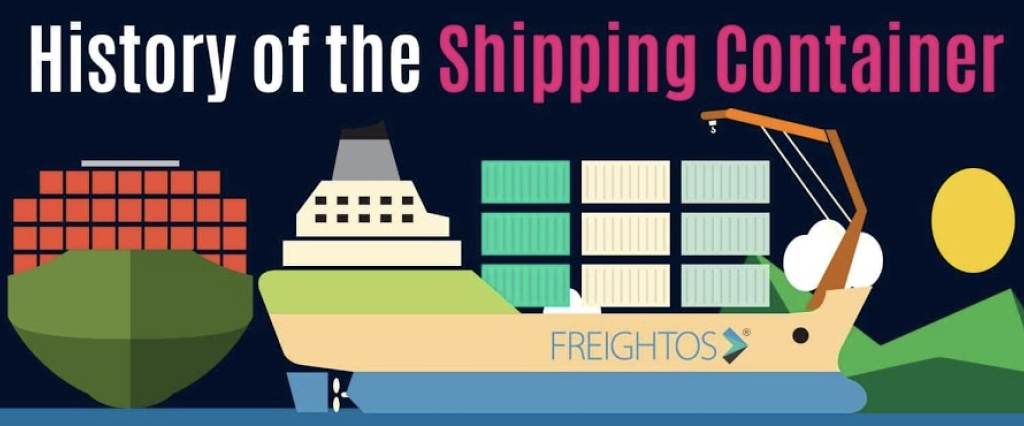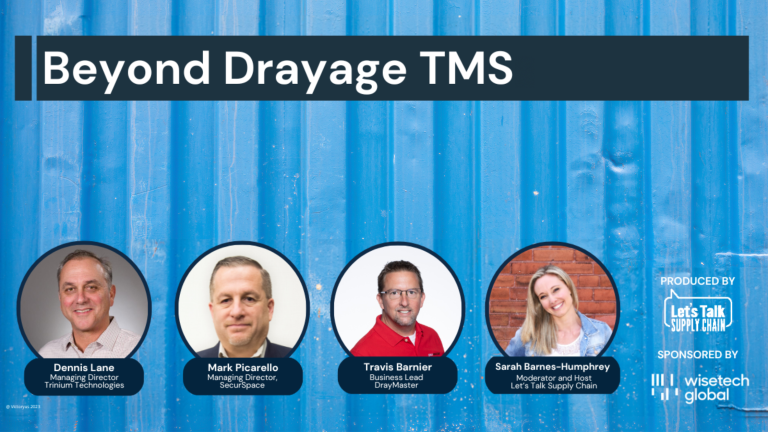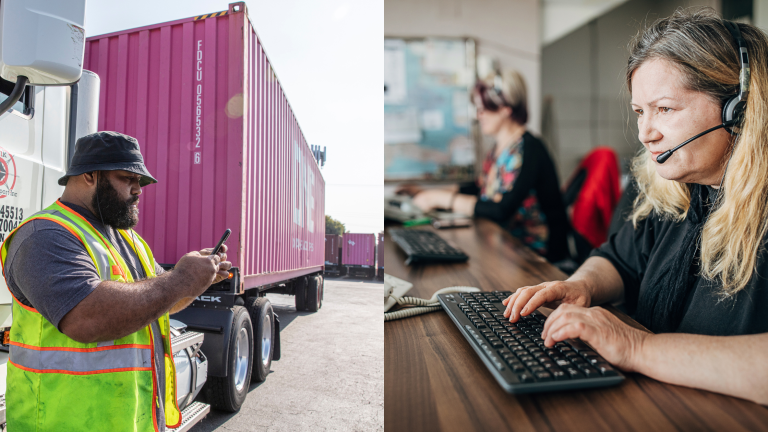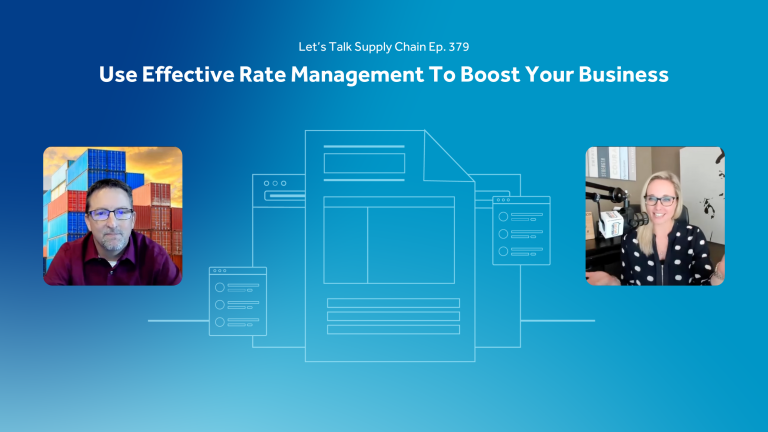Imagine waiting a week to unload a cargo ship—that was life before containers
Ships loaded high with rectangular containers. Giant cranes lowering containers in stacks or onto waiting trailers. Containers moving seamlessly from ship to port to truck to warehouse. This is how we picture cargo moving in today’s interconnected economy.
But it wasn’t always like that. Until the middle of the twentieth century, ships were loaded with a mish mash of crates, containers, and other freight. Stevedores on the docks would unload ships with cranes and cargo nets. It could take days or weeks for a single ship to unload. And days or weeks to load it back up for the return journey. That was until Malcom McLean had an idea while he was waiting for his truck to be unloaded at the docks.
Malcom McLean was in the trucking business. He had a small fleet of trucks and carried loads of tobacco and cotton to the docks for his customers. Trucking was a small, family business. With only a few truck Malcom couldn’t waste hours waiting at the docks.
But in the 1930s, waiting at the docks was what trucking and shipping was all about. But in 1937 Malcom got an idea. Why not load a ship with standard sized, durable containers that can be filled away from the port and then just stacked onto a ship like giant blocks?
Loading ships with nets and crates. Trying to get as much cargo securely loaded onto a ship took a long time when everything is odd-sized. But like all great ideas, critics laughed at Malcom’s idea.
It was completely impracticable. You’d need to have special trailers for trucks to carry removable containers. You’d need ships designed with wide-open holds to load 20 foot containers. You’d need the containers themselves. Who’s going to do all that?
Malcom didn’t listen to his critics.
The Container Era
After World War Two, Malcom bought two oil tankers and refit them to carry containers. And on April 26th, 1956 the SS Ideal-X left New Jersey for Houston with a full load of cargo.
And the container era was born.
It would take a decade for all the pieces to come together to change the entire shipping industry, but it’s fair to say global commerce as we know it might not have been possible without the invention of standardize containers and containerizing cargo.
Before Malcom’s innovation it cost $5.86 a ton to unload a ship. With containers that cost plummeted to $0.16. Sixteen cents. With lower shipping costs, companies around the world could afford to get their products to markets previously beyond their reach.
The tide did not change until the older ports witnessed the financial resurgence of port cities that had adopted containerization. His business got an additional boost when the Port of Oakland, California, invested $600,000 to build a new container-ship facility in the early 1960s, believing that the new facility would “revolutionize trade with Asia.” The Truck Driver Who Reinvented Shipping – HBS Working KnowledgeThis infographic from FrieghtOS has all the highlights of Malcom’s inspiration to creating an entire industry to launching his world-wide shipping empire.

Intermodal trucking is born
From the birth of the container industry came the intermodal trucking industry. With so much cargo on containers arriving at ports, you needed short-haul trucks to move those containers to the next step in the chain. Port to truck to train. Port to truck to warehouse. Drivers could carry containers to and from the port a few times a day.
Now, you have to keep track of those containers, drivers, and jobs. It’s no easy feat. And this is where Envase founder Larry Cuddy and Malcom McLean intersect. Larry worked in the drayage business and saw how inefficient tracking everything on paper was. Orders, invoices, proposals, estimates, drivers—everything was on paper. Larry wanted a computerized Transportation Management System (TMS) he could use for his drayage business.
But nothing met his needs. Drayage works differently than long-haul trucking or shipping. He could’ve done what everyone else did—just shoe horn something in and make it work. But that shoe didn’t fit and he wouldn’t wear it. Like Malcom, Larry saw a huge opportunity to, again, revolutionize the shipping (and drayage) business. Larry would build his own TMS tailor-made to drayage.
And he did just that. You can learn more about Larry’s story here.
Learn How Envase Grows Your Drayage Business
Larry Cuddy built Envase to be the best-of-breed TMS for drayage in the world. And in just a couple years it’s gone from inspiration to a world leader in drayage software. Hundreds of companies and carriers use Envase to manage and grow their business.
If you’re still managing your business on paper and spreadsheets, learn how Envase brings your entire business into one, easy-to-use system designed especially for the needs of drayage and intermodal trucking businesses.
Contact us for a demo and see how Envase will help you grow your business.




